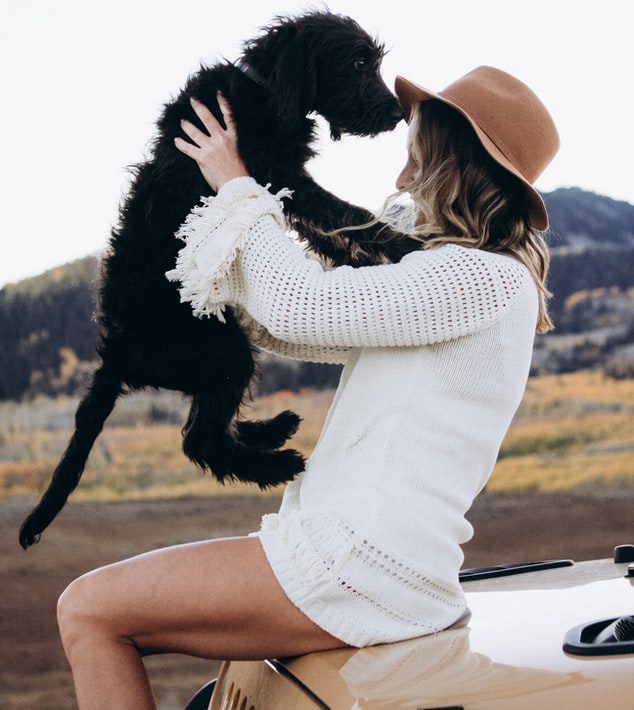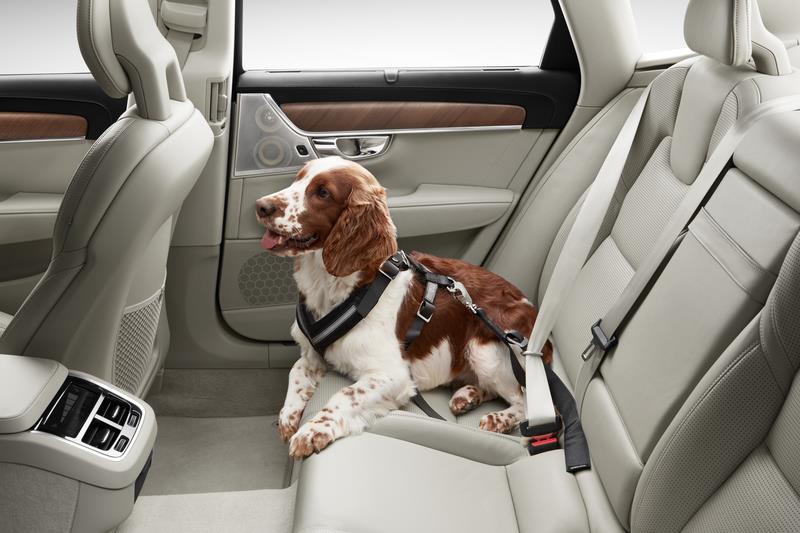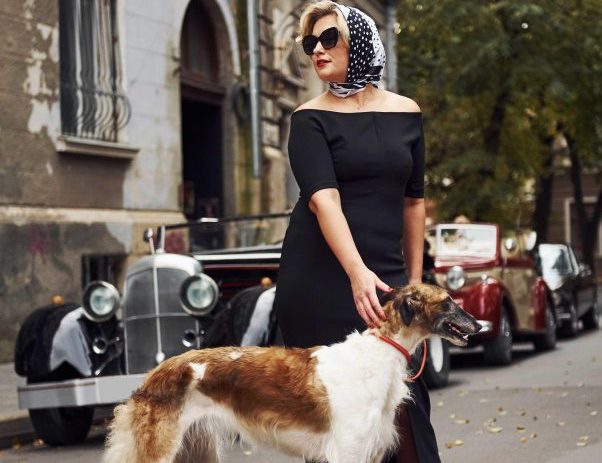Driving with your dog is such fun. She loves poking her head out the window, her ears flapping in the breeze. And when she rests her head in your lap, you pet her with your right hand because, after all, you only need one hand on the wheel, right?
Wrong—oh, so very wrong.
Driving with your dog untethered in the car is truly an accident waiting to happen. Here are the facts: of the 43.3 million households in the United States that own pets; 44% own dogs. According to the American Veterinary Medical Foundation, 36.5% of dog owners own more than one dog. That’s 78 million dogs. While driving, 84% of dog owners fail to restrain their dogs in their car. According to the AAA, the Automobile Association of America, there are approximately six million crashes a year; 65% of drivers reportedly are distracted by their dogs. While driving, 52% admit to petting their dogs; 17% allow their dogs to sit in their lap; 13% will feed their dog treats, and 4% admit to playing with them. According to the National Highway Traffic Safety Administration, there are approximately 6 million car crashes a year. Approximately 40,000 Americans are killed in car accidents each year. Almost 400,000 people were injured due to distracted driving. Do the math.

According to Allianz Insurance, “an unrestrained pet in the car can suddenly become a dangerous projectile—with tragic consequences for the animal and other occupants. If a car crashes at a speed of only 25 mph, an airborne dog can develop projection forces equaling 40 times its weight. For example, a German Shepherd weighing 77-lbs. can impact with a force of 1,400 kilos (3087 pounds). The damage this can wreak as it progresses through the cabin and, sometimes, out the front windscreen, can only be imagined.”
“Even for smaller pets traveling at just 30 miles per hour, an unrestrained 10-lb. dog will exert 300 pounds of pressure in an accident,” according to Jennifer Huebner-Davidson, traffic safety programs manager for AAA.” And according to CNN’s report, Rethink Your Dog Roaming Freely, “Without a crash-tested safety restraint, that pint-size pooch can injure passengers and become severely injured themselves on impact.” Check out this video: Keeping pets safe in the car.
Twenty years ago, Volvo, the Swedish car manufacturer that built its reputation on passenger safety, conducted a series of tests to determine what would happen if a car was traveling with a canine passenger—in this case, a 60 lb. dog in the back seat. In the event of a head-on collision at a speed of 30 mph, the force of propulsion, incredibly, was equivalent to that of an elephant—and invariably propelled into, or through, the windshield.
There are two categories of dog restraints designed for cars. One is a dog harness. Dog harnesses are ideal for a subcompact car or sedan but can be used in any type of car. The dog is strapped into the harness. The harness is then secured to a seatbelt in a second-row seat. This will keep your dog safe and secure.

If you have a van or SUV, a dog crate secured firmly in the rear of the vehicle is ideal. Dog retention systems installed behind the second-row seats of an SUV safely keep your dog in the rear storage area. Some car manufacturers offer specially designed restraining gates in certain models. For example, the Volvo 90 series offers an animal safety performance dog cage, which will prevent a 60-lb. dog from flying forward without intrusion in the passenger seats. The Volvo XC60 Dog Cage is likewise designed for easy entry and exit for the dog, allows two dogs to be side-by-side in separate compartments, plus room for luggage. Volvo Cars and Pet Safety.
“Trips around town or to local destinations have become an important part of our lives these last few months, and, for many people, that means bringing along their pets as they hit the road,” said Brian Moody of Autotrader in announcing the 10 Best Cars for Dog Lovers. “To help new-car buyers that are traveling with four-legged friends, we’ve carefully curated a list of the best cars that offer great comfort and safety features while also making the lives of pet parents just a little easier.” In alphabetical order, they are the Audi Q5, Chrysler Pacifica, Honda Fit, Hyundai Kona, Kia Soul, Jeep® Wrangler, Subaru Outback, Tesla Model Y, Toyota Sienna, and Volvo V60 and SC90.
According to Lindsey Wolko, founder of the nonprofit group, Center for Pet Safety, “Some companies label their products as “tested” or “crash-tested, but there are no government or industry standards.” Funded by Subaru, the group did its own tests of crates, harnesses, and pet carriers. Here are the results:
The top-performing models from its past tests include:
Carriers
• Sleepypod Air
• Sleepypod Atom
• Sleepypod Mini with PPRS Handilock
• Sleepypod Pet Bed with PPRS Handilock
Crates
• Gunner Kennels G1 with 8-inch tie-down straps
• Lucky Duck Lucky Kennel Intermediate with 8-inch ratchet tie-down straps
Harnesses
• Sleepypod Clickit Sport
• Sleepypod Clickit Terrain
• ZuGoPet, The Rocketeer Pack
Here are some ways to make traveling easier—for both you, and your dog:
Get a Cargo-Area Mat or Liner. Mats and liners help protect carpets and make cleanup easier. Look for one with a 2- to 3-inch lip around the edge to keep spills contained.
Get a pet bed that fits in your dog’s crate or rear retention area. She’ll be more comfortable—and happier.
For medium and large dogs, a loading ramp that’s designed for cars makes it easier for dogs to get in and out of vehicles. Telescoping or foldable ramps provide extra length without being too long to fit in your car.
Remember, always bring along a gallon of water, dog food and treats, dog dishes, and your dog’s medication when traveling with your dog. And last but not least, get a “Dog on Board” sign for your car window. This way, first responders will be on the alert to help your dog and prevent her from escaping into the roadway and oncoming traffic.
Abide by these things and limit your risk, always remembering that accidents do happen.


